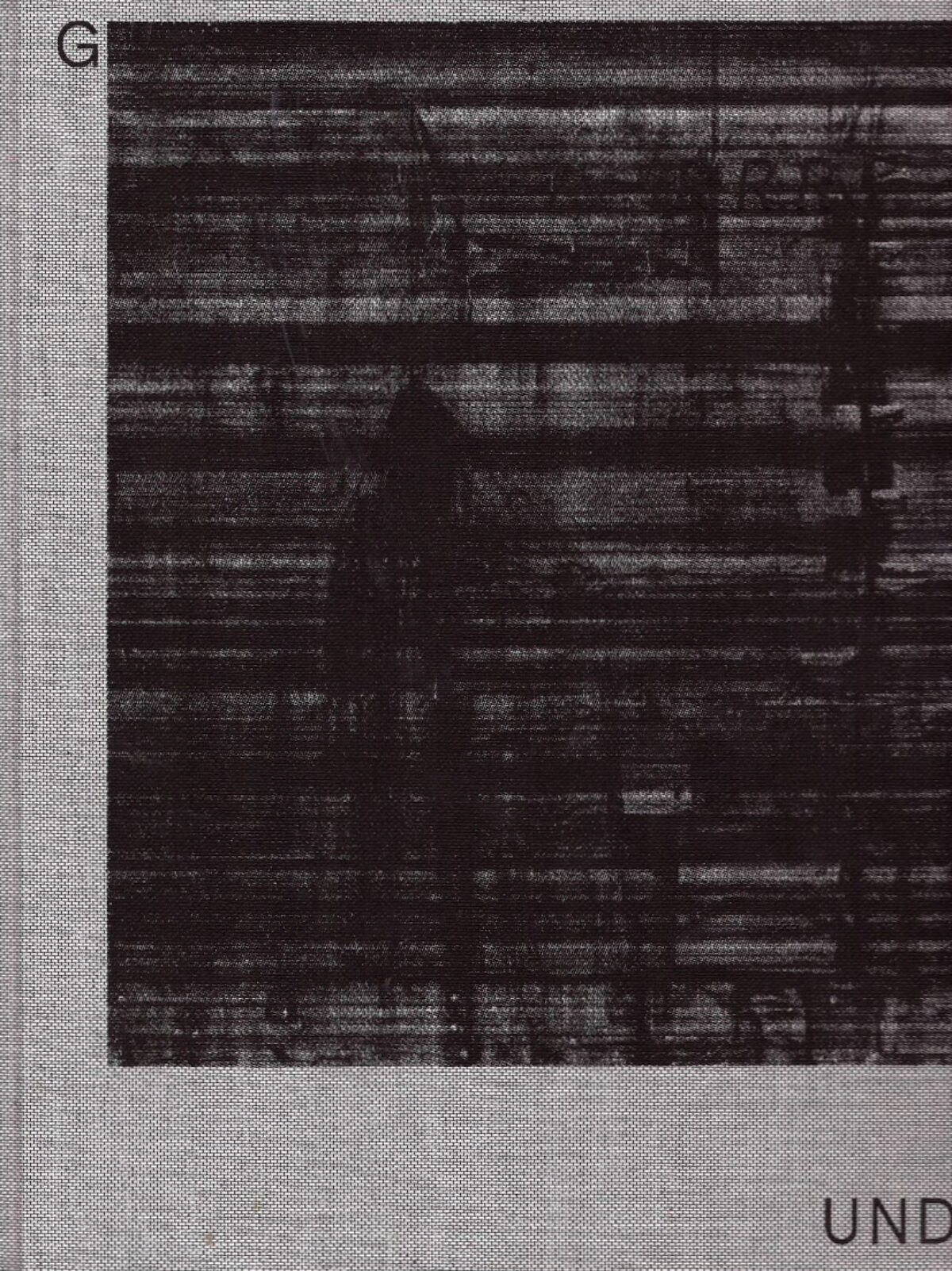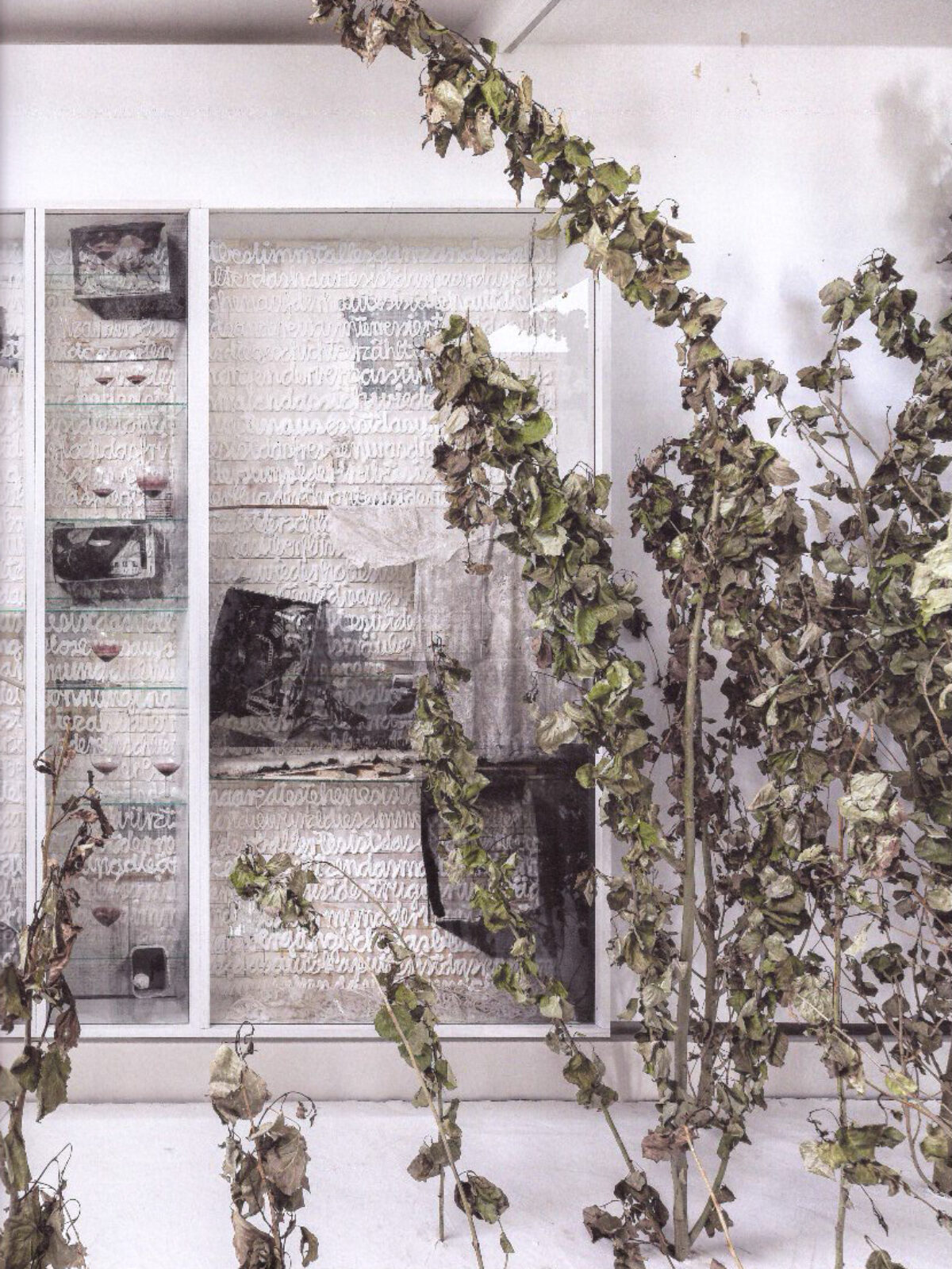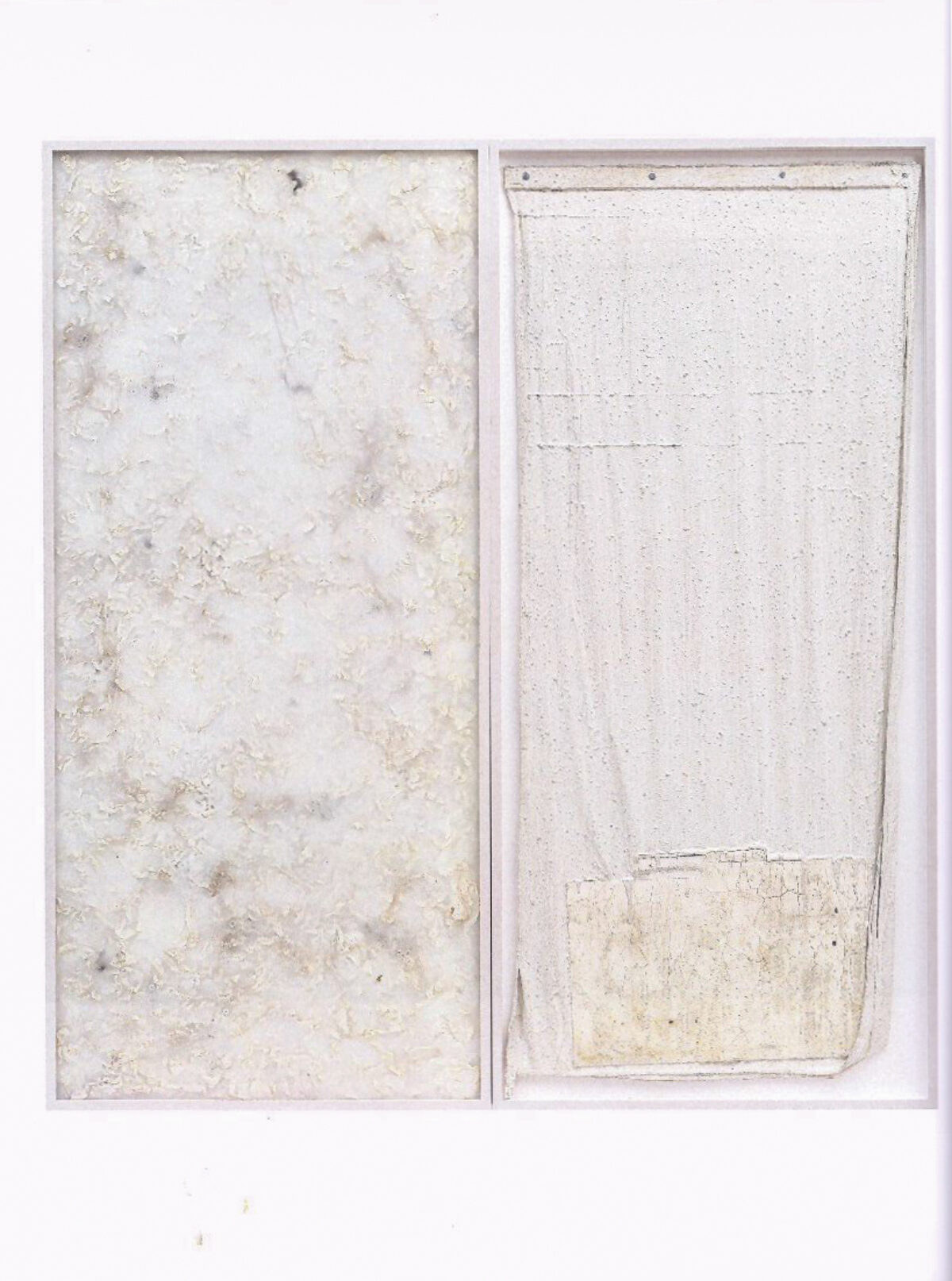Grrrund
Utrike Groos
Grrrund: The unusual title of this catalogue sets off with a sound, an onomatopoetic „grrr”. Dogs growl when they want to be left alone; in English, a „grer” may express anger or discontent; yet „grrr” may also symbolically stand in for the sound of soft static. In the title of the catalogue, this polyvalent and association heavy chain of sound melds into the German word Grund (ground”, but also „grounds”, or „reason*”), gesturing to the beginning of an exhibition cycle continuously revisited over the last years, as the artist Stefan Vogel displayed his installations, paintings and drawings in various exhibition spaces.
An essential concept underlying this project is a house – or rather, an imagined place – Stefan Vogel built over and over again in the course of these exhibitions. Each iteration took place under completely different spatial conditions and modes of presentation: It was first exhibited at Galerie Jahn und Jahn (GRRRUND) in Munich, then at the Overbeck-Gesellschaft and the St. Petri church in Lübeck (DRAUSSEN WIRD ES LEISER), subsequently at the Kunstsammlungen Chemnitz (RELAX, IT’S ONLY PARANOIA), followed by the Tichy Ocean Foundation in Zurich (WO DER GELBE FLECK IST UND DAS SCHEITELHAAR LIEGT, DA TUT ES WEH) and, ultimately, the Kunstpalast (WOLLEN) and Schönewald gallery, Düsseldorf (ALS WÄR NICHTS GESCHEHN). It is only at the end of this long romp of consecutive exhibitions that the house could finally be apprehended in its entirety.
A key theme recurring in Stefan Vogel’s investigation into dwelling places, and the life that goes on in the house or apartment, is the fragile construct of the romantic couple. The artist builds utopias – ideal images and visions of the future – pertaining to this particular form of life. In this way, the fragility and vulnerability of these interpersonal relationships, charged as they are with deeply wishful thinking, soon become apparent, as do their darker sides: various failures associated with irresolvable conflicts and concomitant separations, which not infrequently end in isolation or loneliness.
This catalogue, originally intended as both the presupposition and result of the entire exhibition concept, is no mere mirror of a dreamt-up house with imagined rooms; rather, it considers itself to be a, or rather, the house as such. The first part of the publication documents and contains reproductions of all the stations of the project. as well as the image productions Stefan Vogel installed in each. The entire process and its expanding concept, which encompasses all its locations, thus become visible and appreciable.
Everything began at Galerie Jahn und Jahn, where Stefan Vogel primarily focused on measuring and mapping the house. His amorphous material-based images delineated the foundations, traced the floor plan and laid the fundamental groundwork for his ideal representations of cohabitation.
In the double exhibition at Overbeck-Gesellschaft and the St. Petri church in Lübeck, the ground floor of the house was shown, with a central living room opening to the front garden. The living quarters were equipped with large-format display cases, and the entries into the house were installed at ground level, forming a threshold between inside and outside.
In a spectacular large-scale installation, the Kunstsammlungen Chemnitz took a deep dive into the basement of the house, which the artist – in the venerable psychoanalytical tradition, where the cellar is viewed as the site of the unconscious – conceives of as a dark, labyrinthine place associated with recollection and safekeeping, as well as the realm of forgotten or repressed desires. Stefan Vogel even went so far as to turn the last room of this basement-themed installation into a „breeding ground”.
This very term is also the one he uses to describe his studio, which for him is as much of a work space as a hobby room.


